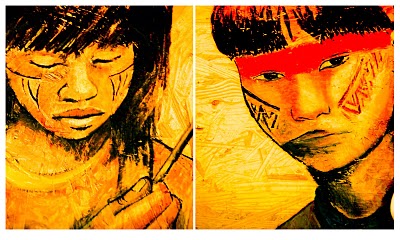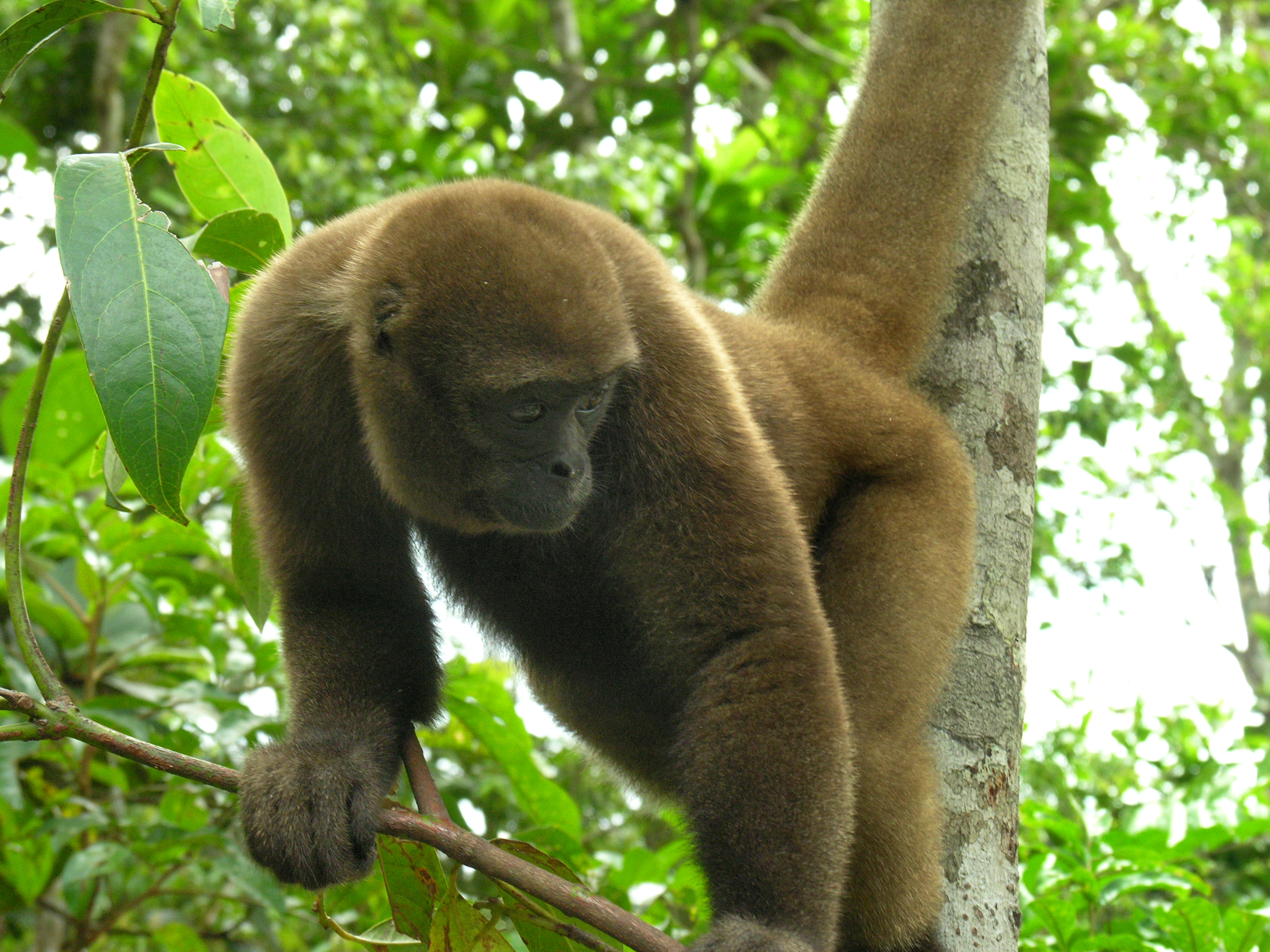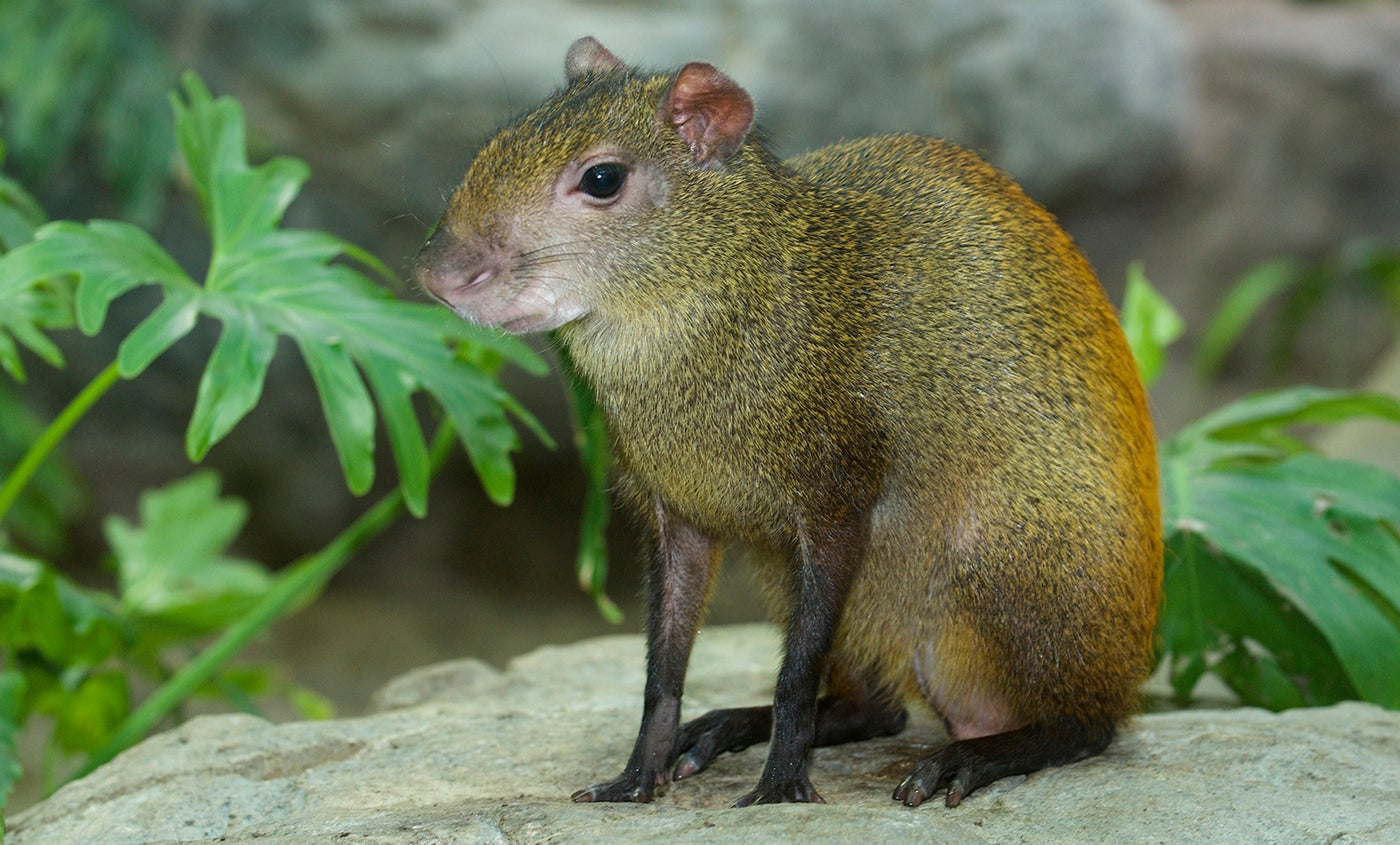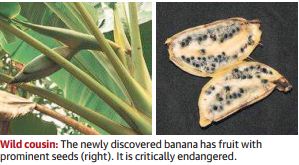Language: Jarawara
Location: The Amazon Rainforest, Amazonas, Brazil
In this article, we will explore the modifier kanikima, which means that the described action happened in lots of different places at once. Here are three examples:
aba mee mee warekanikimakeni = they cooked the fishes in many different pans here
mee kaa tisera soo narekanikima narake = the latex cups were scattered all across the floor
tafakanikima onahara oke = I had a bite to each in many different houses
We will now dissect each of these sentences individually.
Sentence 1:
aba mee mee ware-kanikima-ke-ni
they cooked the fishes in many different pans here
aba means fish.
aba mee means fishes. More literally it means them fish, or fish them word-for-word.
mee is the 3rd Person Non-Singular Pronoun. In English it can mean both they and them. It is referred to as the Non-Singular as oppose to the Plural because in some contexts, Jarawara has a Singular-Dual-Plural distinction, whereas on others it has a Singular-Non-Singular distinction.
ware is the infinitive to cook.
In this context, kanikima refers to the many different pans in which the fishes were cooked. In addition, it could refer to the fish being cooked on on different skewers, or to the fish being cooked over different fires.
Of course, these three possibilities imply that the speaker exists inside the traditional Jarawara lifestyle. In a modern kitchen, it could mean that some fish are in the oven, others on the hob and others in the microwave.
-ke is the Feminine Declarative Suffix, which is used to mark the most salient information in a clause. In this case, it is used to describe a new activity, i.e. the act of eating. Jarawara gender will be discussed in greater detail later.
-ni (full form -hani) is the Feminine Immediate Past Non-Eyewitness Suffix.
In Jarawara, there are three forms of the Past Tense: Immediate, Recent and Far. There are no hard and fast rules as to when to use each of these Tenses, except for their order relative to each other.
As a rule of thumb, the Immediate Past typically refers to any time from a few moments to a few months ago; the Recent Past from a few months to a few years ago; and the Far Past for anything further ago than the previous two.
The Non-Eyewitness part indicates that the speaker did not see the the event with his own eyes.
Like many European languages, Jarawara has two genders called Masculine and Feminine. That said, the two are not used equally. When the Subject or Agent of a sentence is not explicitly Masculine, i.e. the word for he or a Man’s name, the Feminine forms of the Suffix are used.
Our second sentence will use a number of words we have already seen.

Sentence 2:
mee kaa tisera soo na-re-kanikima na-ra-ke
the latex cups were scattered all across the floor
mee kaa tisera means the latex cups. This doesn’t refer to cups made out of latex, but instead cups which are used to collect rubber from trees.
mee makes a comeback from the previous sentence.
kaa is a possessive marker, meaning something close to of.
tisera means cup for collecting rubber, and is a loan from Portuguese. Now, you may think that this is a derivation of the word xicara, which means cup, but is actually derived from the word tigela, which means bowl.
For the purposes of brevity, mee kaa tisera is a set phrase. I could dissect it in greater detail but that would probably take too long.
soo means to lie, but can only be used by plural subjects. The verb soo is non-inflecting, which means that it does not accept any suffixes or prefixes, and remains always in its infinitive form.
In both its appearances, na is an Auxiliary Stem. This means that it does not have an independent meaning. Instead, it carries the prefixes and suffixes which would otherwise be attached to the main verb.
-re is a locative (location) suffix. This one means that the event took place on a raised surface, a floor.
In this context, kanikima refers to the floor, and thus means that the latex cups are spread across the floor.
-ra (full form -hara) is the Feminine Immediate Past Eyewitness suffix. Long story short, this is the Eyewitness equivalent to -ni/-hani, whom we met in the previous sentence.
-ke is the Feminine Declarative Suffix, another old friend at this point.
Our third and final sentence is built mainly from components that we have already encountered.
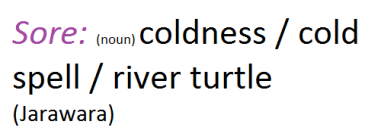
Sentence 3:
tafa-kanikima o-na-hara o-ke
I had a bite to each in many different houses
tafa is the infinitive form of to eat.
-kanikima refers to where the eating took place. In a traditional Jarawara setting, it describes eating in multiple people’s houses. At a Jamboree it could refer to eating roasted marshmallows at multiple campfires, or possibly even to visiting different tables at an all-you-can-eat buffet.
o- is, in both instances, the First Person Singular Prefix. In English, this is translated as the pronoun I. In the abscence of -kanikima, this would be attached to the verb -tafa, but the rules surrounding where to place Jarawara suffixes and prefixes would take us far outside the scope of this article.
The other three components, namely -na-, -hara, and -ke, have all been discussed already.

Naturally, these are not the only ways wherein one can use kanikima, but I felt that three sentences was enough. I do not wish to confuse you more than I already have. One notable omission included kanikima as an independent word, attached to nothing.
Glossary (in order of appearance):
aba = a fish
mee = they / them
ware = to cook
kanikima = in multiple locations / spread over a single location
-ke = this is a real event which took place
-ni = this event happened very recently but the speaker did not see it personally (Feminine variant)
kaa = of / belongs to
tisera = a cup
soo = for more than one thing to lie down
-na- = to do something, e.g. do eating
-re = on a raised surface
-ra = this event happened very recently and the speaker did see it personally (Feminine variant)
-tafa = to eat
o- = I
I hope that this was an interesting and informative, albeit short, exploration into the grammar of Jarawara. This is a new format with which I am currently experimenting. So far I appreciate the pared down, more ascetic style and tone.
I look forward to our next exploration.
Yours sincerely,
Languages with Wilf
Source:
R. M. W. Dixon, The Jarawara Language of Southern Amazonia (Oxford: Oxford University Press 2004)



